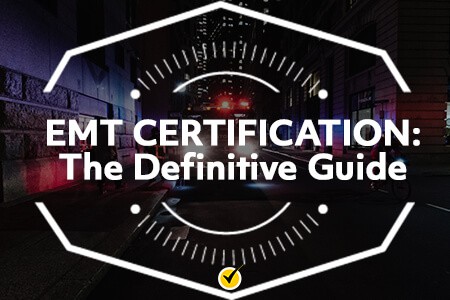– The pass rate for paramedic students is 69% and 64% for EMT students.
– EMTs are considered to be clinicians that are trained to respond quickly to an emergency situation.
– EMTs are employed by private ambulance services, governments, hospitals, fire departments, and police departments.
– Some EMTs are unpaid volunteers.
EMTs are first responders that are called out to the scene of an emergency. This emergency can range from anything such as a car accident or fire to a dog bite or someone who is ill. EMTs provide support to those who are injured or ill as well we administer medications and provide emergency care procedures.
There are different levels of being an EMT, each requiring an exam to obtain certification. While each level of certification allows EMTs to provide different support or perform different procedures, the exams are roughly the same. Each exam contains both a cognitive exam and a psychomotor exam.
The cognitive exam tests your knowledge of:
• Airway, Respiration, Ventilation
• Cardiology & Resuscitation
• Trauma
• Medical; Obstetrics & Gynecology
• EMS Operations
The psychomotor portion of the EMT certification exam is a hands-on exam to demonstrate the emergency skills that you have learned such as history taking and secondary assessment.
EMR Certification
Emergency Medical Responders are also called certified first responders. These responders arrive earlier at an accident or medical emergency. They are a crucial part of the assistance team and can quickly assess an emergency situation, administer first aid and call for an ambulance. Emergency Medical Responders must have the skills and knowledge to provide immediate medical interventions while waiting for additional EMS resources to arrive.
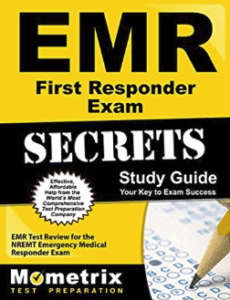
The EMR exam contains two exams; a cognitive exam and a psychomotor exam. The cognitive exam is a computer adaptive test that contains between 60 and 80 multiple-choice questions.
To be eligible to sit for the EMR certification exam, you must:
• Have successfully completed a state-approved EMR course and have completed the course within the past two years
• Have a current CPR-BLS for “Healthcare Provider” or equivalent credential
EMT Certification
EMTs or Emergency Medical Technicians provide emergency medical services outside of hospitals. They also provide transportation for critical and emergency patients who require the services of a hospital. EMTs have the basic knowledge and skills that are necessary to stabilize a patient and to safely transport them to the hospital. They also provide transportation for non-emergency patients and routine medical transports. EMTs have the knowledge to perform medical interventions with basic equipment that is found on the ambulance. An EMT can do anything an EMR can, but can also provide more medications and advanced monitoring.
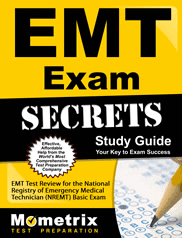
The cognitive exam for the EMT certification will consist of 70 to 120 questions that will count towards your score. Out of those questions, 10 questions are pilot questions and do not count towards your final score. You will be given 2 hours to complete the exam. The psychomotor exam will not only test your hands-on knowledge about basic skills but will also test your knowledge over
• patient assessment and management for a trauma patient
• patient assessment and management of a medical patient
• cardiac arrest management/AED
• bag-valve-mask ventilation of an apneic patient
• spinal immobilization
• long bone fracture support immobilization
• joint dislocation immobilization
• traction splinting
• bleeding control/shock management
• upper airway adjuncts and suction
• mouth-to-mouth ventilation with supplemental oxygen
• supplemental oxygen administration to a breathing patient
To be eligible to sit for the EMT certification exam, you must:
• Be 18 years or older
• Have successfully completed a state-approved EMT course within the past two years
• Have a current CPR-BLS for “Healthcare Provider” or equivalent credential
Advanced EMT Certification
Advanced EMTs can do anything a regular EMT can do including start IVs, give certain medications and administer low-level pain control medications. Advanced EMTs provide basic and limited advanced emergency care as well as transportation for critical and emergency patients. Advanced EMTs have the knowledge to perform medical interventions with basic and advanced equipment that is found on the ambulance.
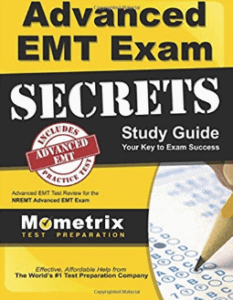
The cognitive exam for Advanced EMTs consists of 135 questions; 35 of those are pilot questions that do not count towards your final score. You are given 2 hours and 15 minutes to complete the exam. The psychomotor exam assesses your hands-on knowledge in:
• Pain Assessment-Trauma
• Patient Assessment-Medical
• Ventilatory Management
• Cardiac Arrest Management/AED
• IV and Medication Skills
• Pediatric Intraosseous Infusion Skills
• Spinal Immobilization
• Random EMT Skills
Get more EMT help by using our online EMT Prep Course.
To be eligible to take the Advanced EMT exam, you must:
• Be 18 years or older
• Have a current NREMT or state license at the EMT level or higher
• Completed a state-approved AEMT course within the last two years
• Have a current CPR-BLS for “Healthcare Provider” or equivalent credential
Paramedic Certification
A Paramedic can do anything that the Advanced EMT can do. However, a paramedic possesses complex knowledge and skills that are required to provide care and transportation of a patient.
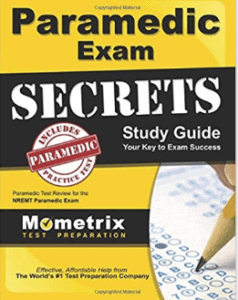
The cognitive exam contains between 80 to 150 questions; 20 of those are pilot questions that do not count towards your final score. You are given 2 hours and 30 minutes to complete the exam. With the Paramedic Certification exam, the psychomotor exam tests the candidate over six skills:
• Patient Assessment-Trauma
• Dynamic Cardiology
• Static Cardiology
• Oral Station Case A
• Oral Station Case B
• Integrated Out-of-Hospital Scenario
If you need more information about the different types of EMT exam, visit The National Registry of Emergency Medical Technicians:
https://www.nremt.org/rwd/public

